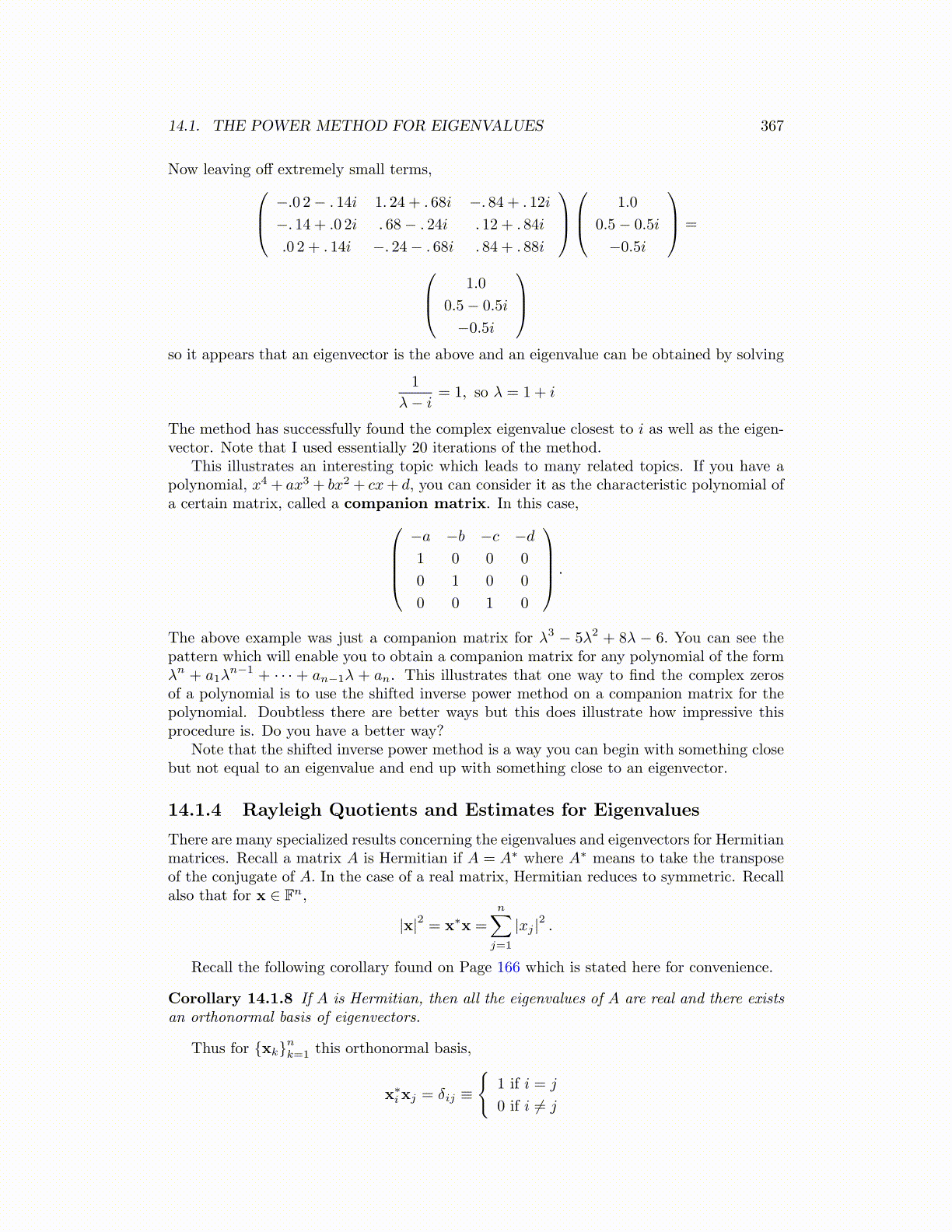
14.1. THE POWER METHOD FOR EIGENVALUES 367
Now leaving off extremely small terms, −.0 2− . 14i 1. 24 + . 68i −. 84 + . 12i
−. 14 + .0 2i . 68− . 24i . 12 + . 84i
.0 2 + . 14i −. 24− . 68i . 84 + . 88i
1.0
0.5− 0.5i
−0.5i
=
1.0
0.5− 0.5i
−0.5i
so it appears that an eigenvector is the above and an eigenvalue can be obtained by solving
1
λ− i= 1, so λ = 1 + i
The method has successfully found the complex eigenvalue closest to i as well as the eigen-vector. Note that I used essentially 20 iterations of the method.
This illustrates an interesting topic which leads to many related topics. If you have apolynomial, x4 + ax3 + bx2 + cx+ d, you can consider it as the characteristic polynomial ofa certain matrix, called a companion matrix. In this case,
−a −b −c −d1 0 0 0
0 1 0 0
0 0 1 0
.
The above example was just a companion matrix for λ3 − 5λ2 + 8λ − 6. You can see thepattern which will enable you to obtain a companion matrix for any polynomial of the formλn + a1λ
n−1 + · · · + an−1λ + an. This illustrates that one way to find the complex zerosof a polynomial is to use the shifted inverse power method on a companion matrix for thepolynomial. Doubtless there are better ways but this does illustrate how impressive thisprocedure is. Do you have a better way?
Note that the shifted inverse power method is a way you can begin with something closebut not equal to an eigenvalue and end up with something close to an eigenvector.
14.1.4 Rayleigh Quotients and Estimates for Eigenvalues
There are many specialized results concerning the eigenvalues and eigenvectors for Hermitianmatrices. Recall a matrix A is Hermitian if A = A∗ where A∗ means to take the transposeof the conjugate of A. In the case of a real matrix, Hermitian reduces to symmetric. Recallalso that for x ∈ Fn,
|x|2 = x∗x =
n∑j=1
|xj |2 .
Recall the following corollary found on Page 166 which is stated here for convenience.
Corollary 14.1.8 If A is Hermitian, then all the eigenvalues of A are real and there existsan orthonormal basis of eigenvectors.
Thus for {xk}nk=1 this orthonormal basis,
x∗ixj = δij ≡
{1 if i = j
0 if i ̸= j